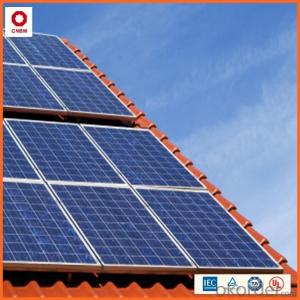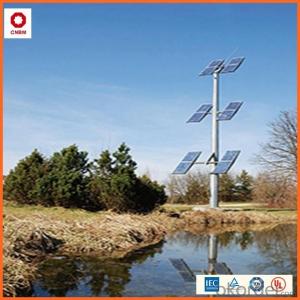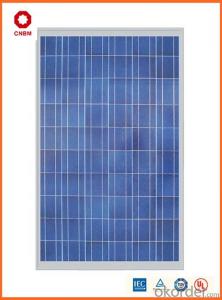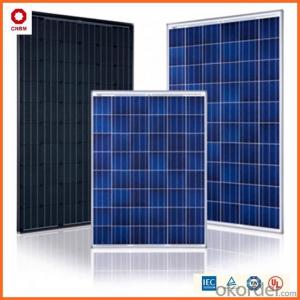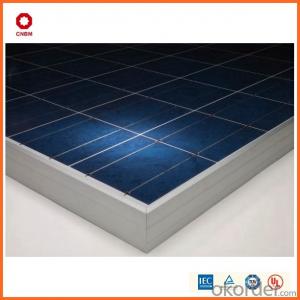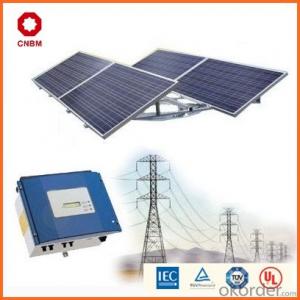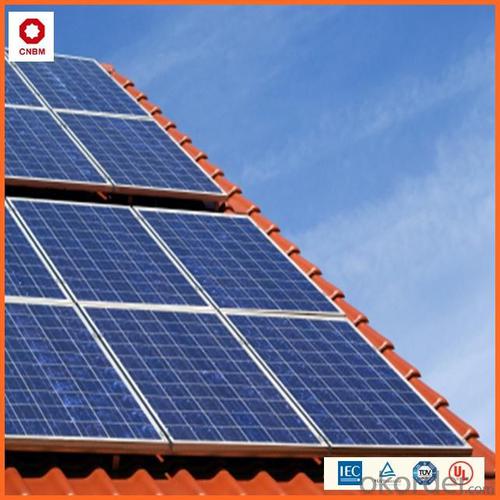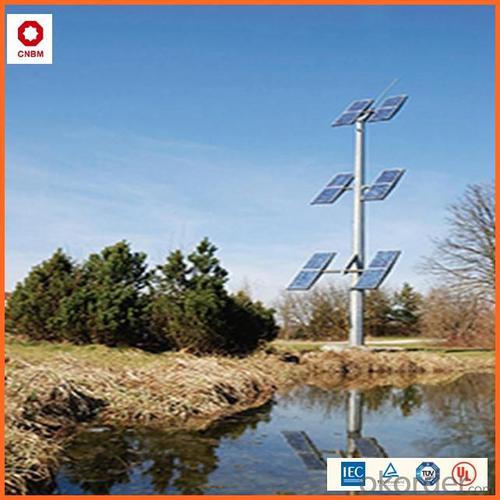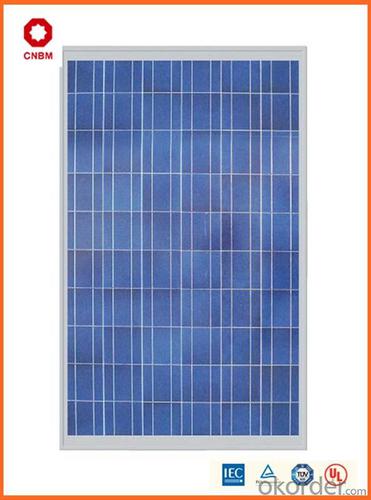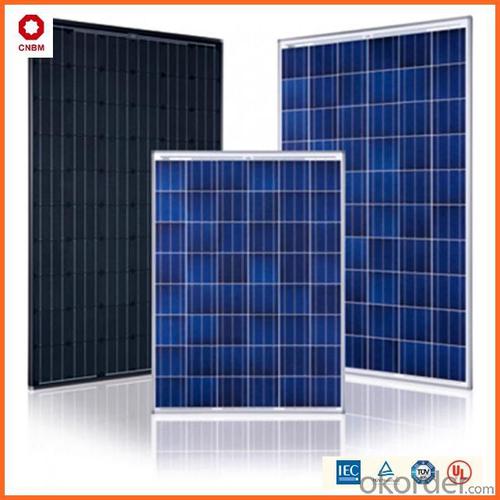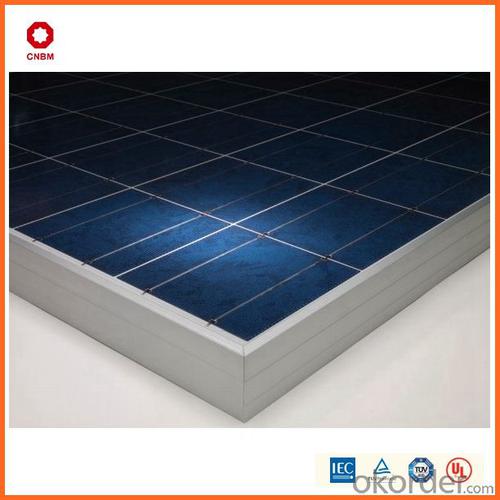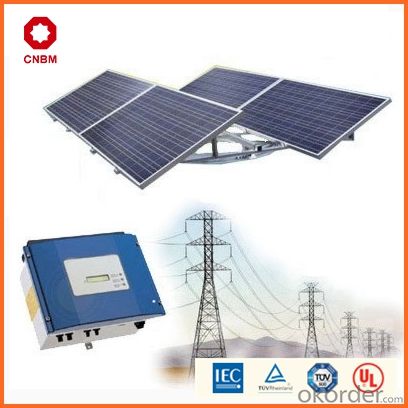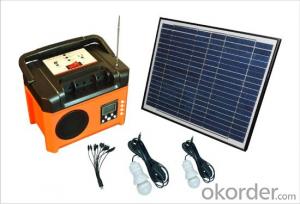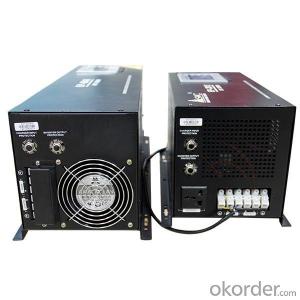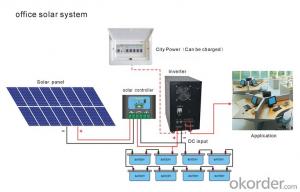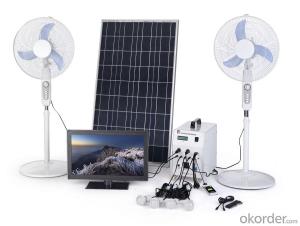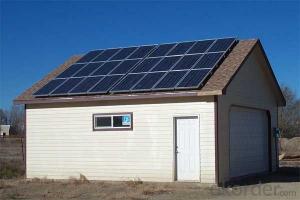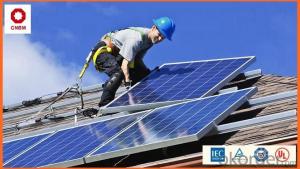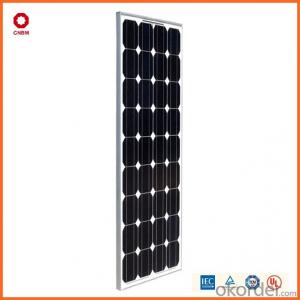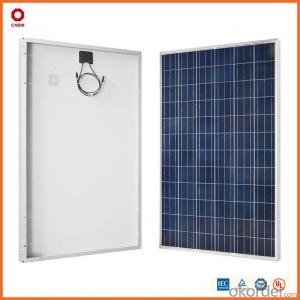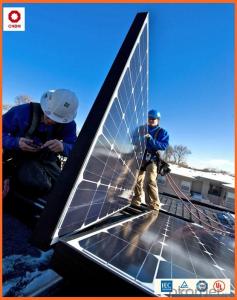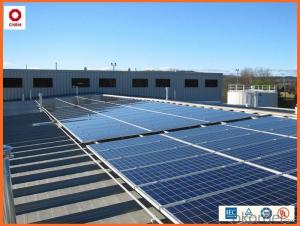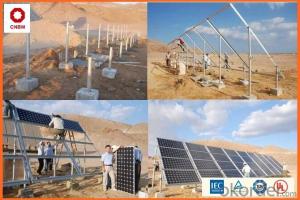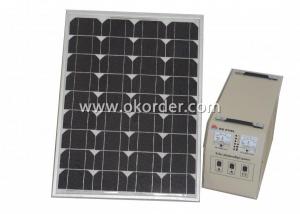35w Small Solar Panels in Stock - Solar Energy Systems Clifton NJ - China Manufacturer
- Loading Port:
- China main port
- Payment Terms:
- TT OR LC
- Min Order Qty:
- 1 watt
- Supply Capability:
- 10000000 watt/month
OKorder Service Pledge
OKorder Financial Service
You Might Also Like
Specification
Product Description:
Hot Sale !!! Quality and Safety of Small Poly Solar Panel 5w~150w
1. Rigorous quality control meets the highest international standards.
2. High-transmissivity low-iron tempered glass, strong aluminium frame.
3. Using UV-resistant silicon.
4. IS09001/14001/CE/TUV/UL
Warranties of Small Poly Solar Panel 35~85w
1. 10 years limited product warranty
2. 15 years at 90% of the minimal rated power output
3. 25 years at 80% of the minimal rated power output
Specification
Characteristics of Poly solar panels CNBM (245-320W) | |||||
Max Power Voltage Vmp(V) | 30.3 | 30.8 | 31.1 | 31.4 | 31.85 |
Max Power Current Imp(A) | 7.60 | 7.64 | 7.73 | 7.81 | 7.85 |
Open Circuit Voltage Voc(V) | 36.1 | 36.6 | 37 | 37.3 | 37.68 |
Short Circuit Current Isc(A) | 8.50 | 8.55 | 8.65 | 8.75 | 8.85 |
Max Power Pm(W) | 230W | 235W | 240W | 245W | 250W |
Temperature Coefficient of Cells Poly solar panels CNBM (245-320W) | |
NOCT | 45± 2 |
Temperature Coeffucients of Isc | 0.0492 |
Temperature Coeffucients of Voc | -0.3374 |
Temperature Coeffucients of Voc | -0.4677 |
Mechanical Data of Poly solar panels CNBM (245-320W) | |
Dimension | 1638 × 982 × 40 mm |
Weight | 19.5 kg |
No. of Cells and Connections | 60 (6 ×10) |
Tolerance | 0 ~ + 5 W |
Cell | Monocrystalline Cell 156 × 156 mm |
Packing | 624 Pcs/40ft(H) Container |
Limits of Poly solar panels CNBM (245-320W) | |
Operating Temperature | -40 to +85 |
Storage Temperature | -40 to +85 |
Max System Voltage | 1000VDC(IEC) / 600VDC(UL) |
Features of our products:
• High conversion efficiency mono/poly-crystalline amorphous silicon solar cells
• Modules incorporate high performance bypass diodes to minimize the power drop caused by shading
• High transmittance, low-iron tempered glass
• High performance EVA encapsulant to prevent destroying and water.
• AI frame: without screw, corner connection. 8 holes on the frame can be installed easily
• Good performance of preventing from atrocious weather such as wind and hails
• Certifications: CE IEC TUV VDE UL, Class I
• 10 years 90% power output warranty
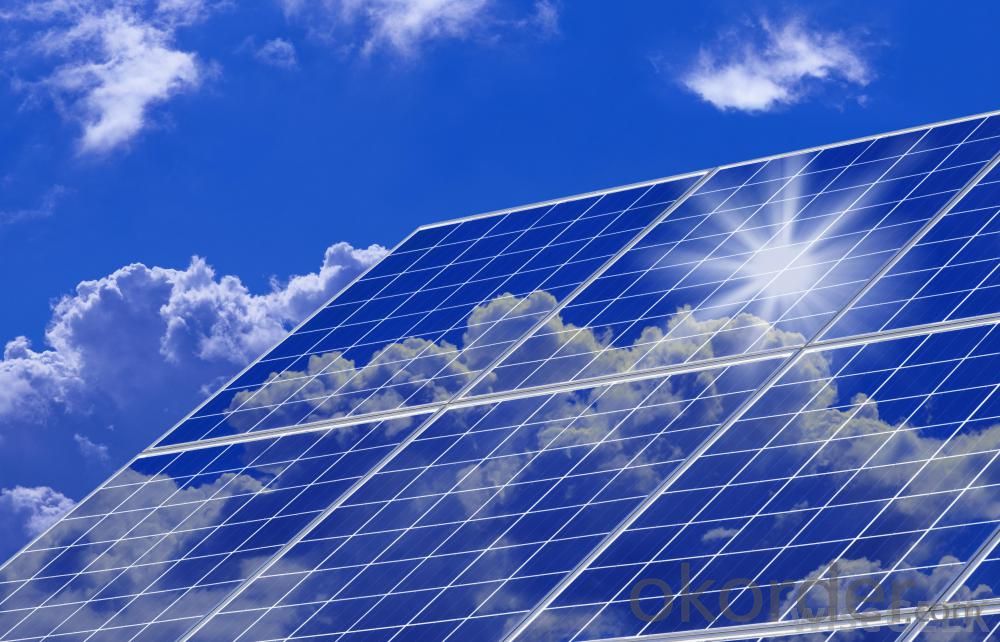
Shipping of Small Poly Solar Panel 35~85w
By Sea | Delivery from Shanghai or Ningbo seaport |
By Air | Departure from Shanghai Pudong Airport |
By Express | Post by DHL, EMS, UPS, TNT. |
Features of our products:
• High conversion efficiency mono/poly-crystalline amorphous silicon solar cells
• Modules incorporate high performance bypass diodes to minimize the power drop caused by shading
• High transmittance, low-iron tempered glass
• High performance EVA encapsulant to prevent destroying and water.
• AI frame: without screw, corner connection. 8 holes on the frame can be installed easily
• Good performance of preventing from atrocious weather such as wind and hails
• Certifications: CE IEC TUV VDE UL, Class I
• 10 years 90% power output warranty
As a professional Solar Panel manufacturer and Supplier in China, we have our customers come around the whole world and our specialization has got a worldwide recognition. Meanwhile, with our superior quality, competitive price, prompt and excellent service, As main role in trade section of CNBM Group, CNBM International Corporation supplies products including Monocrystalline Solar Panel, Polycrystalline Solar Panel ( multicrystalline silicon Solar Panel) have received and enjoyed famous reputation in many countries and regions in the world.
- Q: What is the impact of shading on solar energy systems?
- Shading on solar energy systems can significantly reduce their efficiency and overall energy production. When solar panels are partially or fully shaded, it can lead to a decrease in the amount of sunlight they receive, resulting in a decrease in the amount of electricity generated. Shading can cause uneven distribution of sunlight across the panels, leading to reduced output and potential damage to the system. Therefore, it is crucial to carefully consider the placement and design of solar energy systems to minimize shading and maximize their effectiveness.
- Q: Can solar energy systems be used for powering space exploration missions?
- Solar energy systems have the capability to power space exploration missions. In space, solar energy is a clean and renewable power source that is abundant. It is already being utilized for various space missions, including the International Space Station (ISS), Mars rovers, and satellites. Photovoltaic (PV) cells, also known as solar panels, convert sunlight into electricity. They are lightweight, compact, and easily integrated into spacecraft design. Solar panels are particularly beneficial for missions near the Sun or in well-lit areas of space, as they can provide a consistent and dependable power source. The ISS, for instance, heavily relies on solar power. It is equipped with large solar arrays that capture sunlight and generate electricity to meet the crew's energy needs and power various onboard systems. Mars rovers like Curiosity and Perseverance also employ solar panels to operate on the red planet. Solar energy systems offer several advantages for space exploration missions. Firstly, they eliminate the need for bulky and limited fuel sources such as batteries or radioactive materials, reducing mission weight and costs. Secondly, solar energy systems require minimal maintenance, providing a long-lasting and reliable power source. Additionally, solar power is environmentally friendly, emitting no pollutants or emissions during operation. However, there are limitations to using solar energy in space exploration. For missions that venture far from the Sun or operate in areas with limited sunlight, alternative power sources like nuclear energy or fuel cells may be necessary. Additionally, solar panels are vulnerable to damage from micrometeoroids, radiation, and other space debris, necessitating protective measures and backup systems. In conclusion, solar energy systems have demonstrated their viability and efficiency in powering space exploration missions. Their ability to convert sunlight into electricity, combined with their lightweight and compact design, make them an ideal choice for providing sustainable and dependable power in space.
- Q: Can solar energy systems be used for powering electric car wash systems?
- Solar energy systems have the capability to operate electric car wash systems. Utilizing photovoltaic panels, solar energy systems convert sunlight into usable electricity. This electricity can then be employed to power a variety of electrical devices, such as car wash systems. By strategically placing solar panels on the roof of a car wash facility or a nearby structure, the generated solar power can be directly harnessed to operate the electric motors, pumps, and other necessary equipment for a car wash system. This not only diminishes the dependence on traditional grid electricity but also aids in reducing operational expenses and minimizing the carbon footprint of the car wash facility. Moreover, solar energy systems have the ability to store surplus energy in batteries, ensuring uninterrupted operation even during periods of limited sunlight or at night.
- Q: Can solar energy systems be used in areas with limited access to healthcare facilities?
- Yes, solar energy systems can be used in areas with limited access to healthcare facilities. Solar energy can power medical equipment, refrigeration systems for vaccines and medicines, and lighting in healthcare facilities, allowing them to function even in remote areas without reliable access to electricity. This can greatly improve healthcare services and enable the delivery of essential medical care, diagnostics, and treatments in underserved communities.
- Q: Are there any risks of electrical shock with solar energy systems?
- Yes, there are potential risks of electrical shock associated with solar energy systems. While solar panels themselves do not produce dangerous voltages, the electrical wiring and components used in the system can carry high voltages that may pose a risk if not handled correctly. It is crucial to have trained professionals install and maintain solar systems to ensure proper grounding, insulation, and safety precautions are in place, reducing the risk of electrical shock to a minimum.
- Q: What is the impact of air pollution on the performance of solar panels?
- Solar panel performance can be significantly affected by air pollution. One of the main ways in which it affects them is by diminishing the amount of sunlight that reaches the panels. Sunlight can be scattered and absorbed by air pollution, such as smog and particulate matter, resulting in a decrease in the solar energy absorbed by the panels. This, in turn, reduces the overall efficiency and power output of the panels. Furthermore, a layer of dust, dirt, and other pollutants can be deposited on the surface of solar panels due to air pollution. This layer obstructs and absorbs sunlight, further reducing the amount of energy that can be collected. Additionally, the accumulation of these pollutants acts as a barrier that hampers the transmission of sunlight to the solar cells, thus decreasing the panels' efficiency. Moreover, air pollution can cause the corrosion of solar panel surfaces. Pollutants like sulfur dioxide and nitrogen oxides can react with moisture in the air, forming acidic compounds. Over time, these compounds gradually deteriorate the protective coatings on the panels and damage the cells, leading to a reduction in performance and lifespan. Overall, the impact of air pollution on solar panels is significant. It diminishes the amount of harvested sunlight, lowers the efficiency and power output of the panels, and can cause damage and deterioration over time. Therefore, it is crucial to consider the effects of air pollution during the design and installation of solar panels to ensure optimal performance and longevity.
- Q: Can solar energy systems be used in cold climates?
- Yes, solar energy systems can absolutely be used in cold climates. While it is true that solar panels generate electricity more efficiently in warmer temperatures, they can still function effectively in cold environments. Additionally, advancements in technology have led to the development of solar panels specifically designed to perform well in low temperatures and even in snowy conditions. In fact, solar panels can still produce electricity on cloudy and snowy days, albeit at a slightly reduced efficiency. Therefore, solar energy systems can be a viable and sustainable option for generating electricity in cold climates.
- Q: How much space is needed for installing a solar energy system?
- The amount of space needed for installing a solar energy system depends on various factors, such as the size and capacity of the system, the efficiency of the solar panels, and the energy requirements of the property. Generally, a typical residential solar energy system requires around 100 to 500 square feet of roof space, depending on the number and size of the solar panels. However, ground-mounted systems can also be installed if there is sufficient space available on the property. It is recommended to consult with a solar energy expert or installer to determine the specific space requirements based on individual needs and circumstances.
- Q: How do solar energy systems impact air conditioning costs?
- Solar energy systems can have a positive impact on air conditioning costs by reducing or eliminating the need for traditional electricity consumption. By harnessing the power of the sun to generate electricity, solar energy systems can significantly lower energy bills and reduce the overall cost of cooling a space.
- Q: Can solar energy systems be used in areas with limited resources?
- Yes, solar energy systems can definitely be used in areas with limited resources. Solar energy is a sustainable and renewable source of power that can be harnessed even in remote or underdeveloped regions. These systems require minimal maintenance and can be easily installed, providing an affordable and reliable source of electricity. Solar energy can greatly benefit areas with limited resources by reducing their dependence on expensive and unreliable fossil fuels, improving access to electricity, and promoting economic and social development.
Send your message to us
35w Small Solar Panels in Stock - Solar Energy Systems Clifton NJ - China Manufacturer
- Loading Port:
- China main port
- Payment Terms:
- TT OR LC
- Min Order Qty:
- 1 watt
- Supply Capability:
- 10000000 watt/month
OKorder Service Pledge
OKorder Financial Service
Similar products
Hot products
Hot Searches
Related keywords
